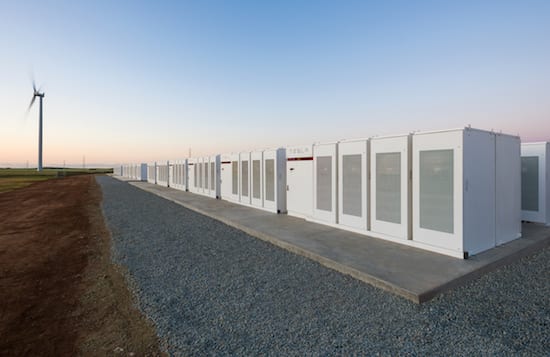The Hornsdale Power Reserve (HPR) – “the world’s largest battery” more commonly known as the “Tesla big battery” – is capturing the attention of energy analysts, policy makers and market operators and investors.
In previous commentary drawing on indicative analysis by the Australian Energy Market Operator, Giles Parkinson discussed the profitability of the HPR’s operations in its first three months, noting that the 30MW of HPR available for wholesale market activities earned estimated net revenues of $2.5 million.
We replicated AEMO’s indicative analysis and found similar results, except for AEMO’s estimate of HPR’s income from the contingency Frequency Control and Ancillary Services. Our results are summarised in Table 1 below.
Table 1. HPR NEM revenues and charging cost, Q1, 2018 ($m)
In total, we estimate HPR did a fair bit better for the first full quarter of its existence (gross spot market margins of $3.2m) than AEMO’s initial indicative analysis suggested ($2.5m).
Extending this analysis for the first and second quarters of 2018 we find that HPR‘s 30MW of traded capacity delivered gross margins of $8.9 million.
Assuming it replicates this in the second six months of this year, we can say that HPR will have gross takings of around $18 million per calendar year. This is surely very satisfying to its investors, for just 30MW of its 100MW capacity.
Figure 1 (below) shows the results for each month of Q1 and Q2. January was the most profitable month by far, but FCAS income for Q2 has been HPR’s biggest earner over the full six months.
 Figure 1. HPR Income and purchases Q1 and Q2 2018.
Figure 1. HPR Income and purchases Q1 and Q2 2018.
Daily prices and volumes
The lower chart in Figure 2 shows HPR has been charging mainly in the early morning and discharging in the evening peak.
Figure 2. HPR volumes and spot market prices (hourly average per month)
In Q1, the dominant pattern was a single cycle: charging at night and discharging mainly in early evening. This pattern started to change in Q2 where the charging/discharging cycle now has two distinct charge and discharge periods.
While primarily charging at night, a morning discharge period is observed, followed by a small recharge period around the middle of the day to be ready for the discharge in the evening peak.
The upper chart in Figure 2 shows the average spot prices in each hour over the six months. It is evident from this that HPR’s cycle followed prices as expected.Smoothing the hourly volume data presented in Figure 2, we should in Figure 3 the cycling pattern over the six months.
Figure 3. Smoothed average HPR volumes (Smoothed hourly average per month)
Figure 1 showed that HPR makes much, but not most, of its money by buying when prices are low and selling back when they are high.
What the average price between buying and selling? The data shows big differences in the average sales price compared to the average purchase price in January.
The load weighted average sales price across the six months is $191/MWh (without January it is $141/MWh). By contrast the purchase price over the same period is $79/MWh ($76/MWh without January). The results for the individual months are shown in Figure 4.
Over the six months, the buy/sell spread averaged $112/MWh ($65/MWh without January). This are impressive results and an examination of the 5 minute dispatch data shows just how valuable HPR’s ability to dash in and out of the market it.
We do wonder what the picture would have looked like if it was a large pumped hydro plant with enormous interia borne of their enormous rotating mass would have fared.
Figure 4. Load weighted average prices.
This analysis of course is based on spot market prices, which may be quite different to prices HPR receives if it has swapped these spot prices for fixed prices. Such contracts are of course confidential.
The economics of storage in all its many forms is now a key feature of electricity economics in Australia, as the rise of zero marginal cost renewables continues apace.
There is much to be learned by analysing the performance of installed batteries, in seeking to understand the economics of storage in batteries and the many possible pumped hydro proposals.
Having built the apps needed to analyse these revenues and expenditures, continued research in this area will be an important part of the VEPC’s work over the coming years.
Steven Parker is a Research Fellow and Bruce Mountain is the Director of the Victoria Energy Policy Centre. We gratefully acknowledge the assistance of Paul McArdle (NEM Review) and Farhad Billimoria (AEMO) in the preparation of this note.














